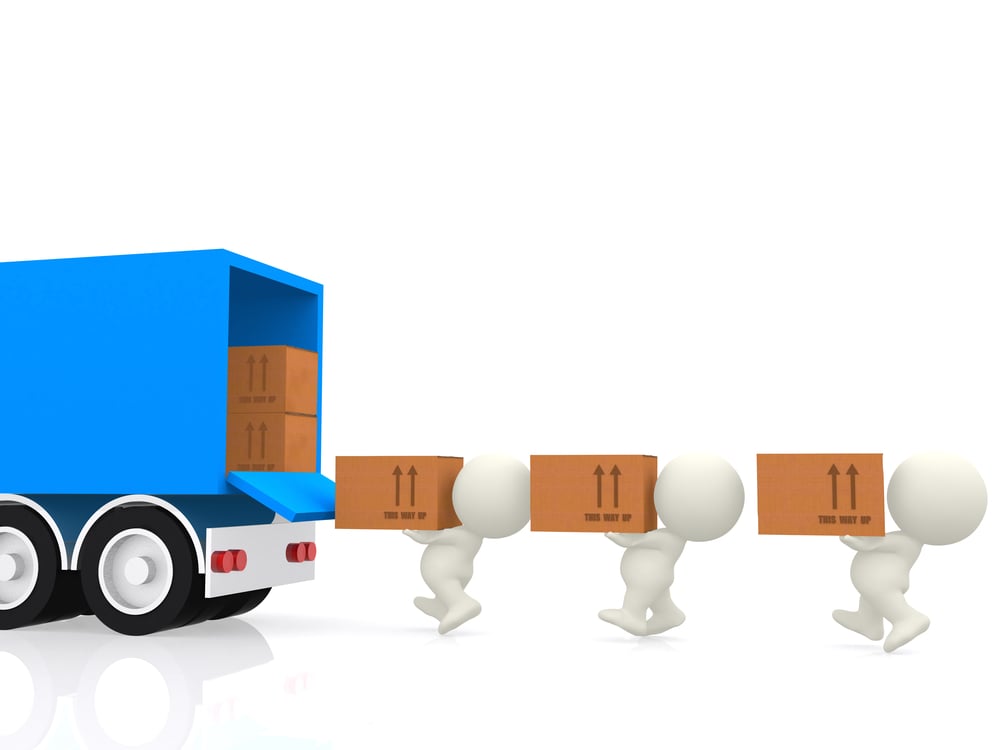What do we mean by compliance training for manufacturers?
DOT Compliance Training for your Employees
DOT compliance Course Overview:
Your employees need to be up-to-date on all the latest DOT compliance regulations, and our compliance training course will ensure that they are. This course covers everything from hazardous materials transportation to driver hours of service rules, and will give your employees the knowledge they need to stay compliant with DOT regulations.
After taking this course, your employees will be able to:
- Understand the requirements for transporting hazardous materials
- Safely operate a commercial motor vehicle
- Comply with hours of service regulations
- Adhere to vehicle maintenance and inspection requirements
Course Outline:
- Introduction to DOT Compliance Regulations
- Hazardous Materials Transportation
- Driver Hours of Service Regulations
- Vehicle Maintenance and Inspection Requirements
Enrolling your employees in our compliance training course is the best way to ensure that they are up-to-date on all the latest DOT regulations. Sign up today!
What is Dot Compliance?
DOT compliance is the process of ensuring that your company and its employees adhere to all the regulations set forth by the Department of Transportation. These regulations cover a wide range of topics, from the transportation of hazardous materials to driver hours of service rules.
Why is Dot Compliance Important?
DOT compliance is important because it helps keep your employees safe and ensures that your company is operating within the law. By understanding and following all DOT regulations, you can avoid costly fines and penalties, and keep your business running smoothly.
How Can I Ensure My Employees are Dot Compliant?
The best way to ensure that your employees are DOT compliant is to enroll them in a compliance training course. Our course covers all the major DOT regulations and will give your employees the knowledge they need to stay compliant. Sign up today!
DOT approved vs dot compliant:
DOT compliance is the process of ensuring that your company and its employees adhere to all the regulations set forth by the Department of Transportation. These regulations cover a wide range of topics, from the transportation of hazardous materials to driver hours of service rules.
DOT approval is not required in order for a product to be compliant with DOT regulations. However, products that have been approved by the DOT may be subject to additional regulations.
DOT supervisor compliance training requirements:
There are no specific training requirements for DOT supervisors, but it is important that they have a good understanding of all DOT regulations. A compliance training course is a great way to ensure that your supervisors are up-to-date on the latest DOT regulations.
DOT safety training topics:
- Introduction to DOT Compliance Regulations
- Hazardous Materials Transportation
- Driver Hours of Service Regulations
- Vehicle Maintenance and Inspection Requirements
Glossary:
DOT training:
A DOT training course covers all the regulations set forth by the Department of Transportation. This type of course is important for ensuring that your employees are up-to-date on the latest compliance requirements.
DOT compliance:
DOT compliance is the process of ensuring that your company and its employees adhere to all the regulations set forth by the Department of Transportation.
Accident
The term accident refers to any event that causes the death of a human being, bodily injury to a person who requires immediate medical attention elsewhere than at the scene of the accident, or the disablement of one or more vehicles as a result of the collision. The terms crash and incident are sometimes used interchangeably, although an accident is not defined as an occurrence when people board and alight from a stationary vehicle, or when goods are loaded or unloaded.
Acute noncompliance
Any violation that necessitates immediate corrective actions by a carrier, regardless of the carrier's overall safety posture.
Alcohol
The intoxicating substance in alcoholic beverages, ethyl alcohol, or other low molecular weight alcohols including methyl and isopropyl alcohol, among other things.
Brake inspector
A brake inspector is an employee who is in charge of ensuring that all brake inspections, maintenance, service, and repairs are in accordance with federal regulations.
Coercion
CoercionA threat or action by someone to prevent another person from obtaining business or employment opportunities, or any adverse employment action, in order to induce that person to break rules or regulations. FMCSA issued a Coercion Rule on November 30, 2015 (49 CFR 390.6), which is discussed in further detail below.
Commercial Driver's License (CDL)
A professional driver's license (CDL) is a type of driving license that is necessary to drive large or heavy vehicles. A higher level of knowledge, expertise, skills, and physical abilities is required than for non-commercial vehicle operation. When operating any sort of vehicle on public streets, CDL holders are subject to a higher standard of conduct.
Commercial Driver's License Information System (CDLIS)
The Commercial Motor Vehicle Safety Act of 1986 created the National Driver Register (NDR) to assist federal, state and local authorities in keeping track of all commercial drivers by establishing a national database. Established by FMCSA under Section 12007 of the Commercial Motor Vehicle Safety Act of 1986. CDLIS is a computer system that allows states to share information about CMV drivers' driving histories and licenses. The following are some examples of how CDLIS aids in ensuring safety:
Commercial Learner's Permit (CLP)
A Learner's Permit (CLP) is a permit granted to someone by their home state or other legal jurisdiction of domicile. 49 CFR 383.25 See. A CLP allows the holder to practice driving a commercial motor vehicle (CMV) in the United States. A CLP does not allow the holder to drive a CMV without being accompanied by another person who has a valid CDL with the proper class and endorsements for the type of CMV being driven. The holder of a CLP must be employed by a motor carrier or have an offer of employment from a motor carrier.
Controlled substance
A controlled substance is any drug or other substance that is regulated by the Controlled Substances Act (CSA). The CSA is the federal law that regulates the manufacture, importation, possession, use, and distribution of certain drugs.
Crash
An accident. The term crash is sometimes used interchangeably with the term accident, although an accident is not defined as an occurrence when people board and alight from a stationary vehicle, or when goods are loaded or unloaded.
Crash indicator
A safety performance measure that uses data from police-reported crashes. FMCSA's Crash Indicator Tool uses a carrier's on-road performance to identify those that are likely to be involved in future crashes.
Driver
A person who drives a commercial motor vehicle (CMV).
Driver fatigue
Fatigue is a general term that describes the impairment of mental or physical function caused by lack of sleep, prolonged wakefulness, or monotonous work. Driver fatigue is a major factor in large truck crashes, and has been cited as a contributing factor in about 56 percent of fatal crashes and 15 percent of injury crashes involving large trucks from 2009 to 2013.
Driver fitness
The physical and mental ability of a driver to operate a commercial motor vehicle (CMV). See also "Medical Examiner."
Driver history record
A driver's motor vehicle record (MVR) is a document that shows the driver's history of traffic violations, accidents, and license suspensions or revocations. The MVR is used by employers to help them decide whether or not to hire a driver, and is also used by the FMCSA to determine if a driver is qualified to operate a commercial motor vehicle (CMV).
Driver qualification files:
A driver qualification file is a collection of documents that contains information about a commercial truck or bus driver's history, experience, and qualifications. The file must be maintained by the driver's employer, and is used to ensure that drivers are properly qualified to operate their vehicles.
Safety management:
Safety management is the process of identifying, assessing, and controlling risks to people, property, and the environment. It includes the development and implementation of policies, procedures, and programs to minimize the likelihood of accidents and injuries.
Dot compliance knowledge:
Dot compliance knowledge is understanding and complying with the rules and regulations set by the Department of Transportation (DOT). This includes knowing what is required to operate a commercial motor vehicle (CMV), and having the proper documentation and insurance.
Hazardous materials:
Hazardous materials are substances that are poisonous, corrosive, flammable, or explosive. They can be solids, liquids, or gases, and are often used in manufacturing and industrial processes.
Commercial motor vehicules:
A commercial motor vehicle (CMV) is a vehicle that is used for business purposes, such as transporting goods or passengers. CMVs include trucks, buses, and other vehicles with a gross vehicle weight rating (GVWR) of 26,001 pounds or more.
Dot compliance help:
Dot compliance help is understanding and complying with the rules and regulations set by the Department of Transportation (DOT). This includes knowing what is required to operate a commercial motor vehicle (CMV), and having the proper documentation and insurance.
Regulatory knowledge:
Regulatory knowledge is understanding and complying with the rules and regulations set by the Department of Transportation (DOT). This includes knowing what is required to operate a commercial motor vehicle (CMV), and having the proper documentation and insurance.
Dot audit:
A DOT audit is an inspection of a commercial motor vehicle (CMV) or driver to ensure compliance with the rules and regulations set by the Department of Transportation (DOT). Audits can be conducted by DOT inspectors, or by third-party auditors contracted by the DOT.
Safety program:
A safety program is a set of policies and procedures designed to minimize the likelihood of accidents and injuries. It should be tailored to the specific needs of the company and its employees, and should be reviewed and updated regularly.
FMCSA compliance:
FMCSA compliance is understanding and complying with the rules and regulations set by the Federal Motor Carrier Safety Administration (FMCSA). This includes knowing what is required to operate a commercial motor vehicle (CMV), and having the proper documentation and insurance.
Final test:
The final test is a road test that is given to commercial truck and bus drivers to ensure that they are properly qualified to operate their vehicles. The test must be taken at an approved testing facility, and the driver must have a valid commercial driver's license (CDL) to take the test.
Transportation industry:
The transportation industry includes businesses and organizations that are involved in the movement of goods or people.
Dot fines:
Dot fines are penalties that can be imposed on commercial motor vehicle (CMV) drivers or carriers who violate the rules and regulations set by the Department of Transportation (DOT). Fines can be assessed for a variety of offenses, including speeding, improper lane changes, and failure to use turn signals.
Roadside inspection:
A roadside inspection is an inspection of a commercial motor vehicle (CMV) or driver to ensure compliance with the rules and regulations set by the Department of Transportation (DOT). Inspections can be conducted by DOT inspectors, or by third-party auditors contracted by the DOT.
Inspection report:
An inspection report is a document that details the findings of a commercial motor vehicle (CMV) or driver inspection. The report includes the inspector's observations, as well as the driver's and carrier's responses to any violations that were found.
Corrective action:
Corrective action is a corrective measure that is taken to address a problem or non-compliance issue. It can be taken before, during, or after an inspection, and may include such things as fixing a defect on a vehicle, retraining employees, or revising policies and procedures.
Violation:
A violation is a failure to comply with a rule or regulation. Violations can result in fines, penalties, or other corrective action.



